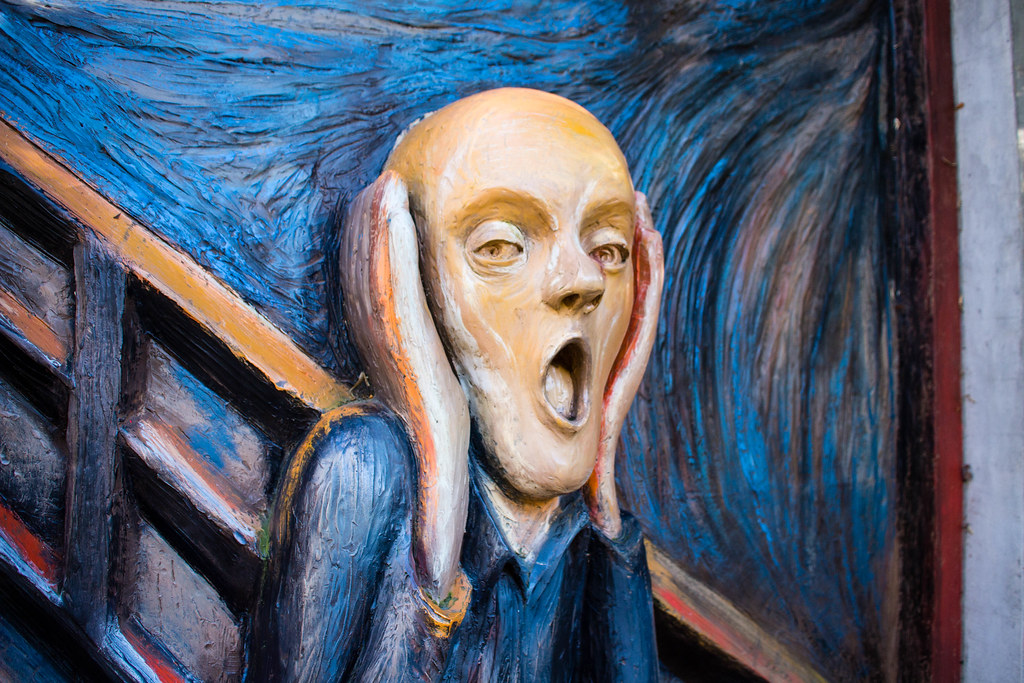The Mona Lisa – Leonardo da Vinci’s Enigmatic Smile

What is it about the Mona Lisa that makes people travel across continents just for a glimpse? Painted by Leonardo da Vinci in the early 16th century, this portrait has been the subject of endless fascination and debate. Many art historians point to her mysterious smile, which seems to change depending on where you stand. The painting resides in the Louvre, where it attracts over 10 million visitors every year, making it the most viewed artwork on the planet. Recent studies have even shown that people spend an average of 15 seconds in front of the Mona Lisa—far longer than most other paintings in the museum. Her subtle expression, delicate hands, and the dreamy landscape behind her all combine to create an image that feels both familiar and deeply mysterious. It’s no wonder she’s often called the world’s most famous face.
The Starry Night – Vincent van Gogh’s Nighttime Wonder

Swirling skies, vibrant blues, and a sense of restless energy—Van Gogh’s Starry Night is instantly recognizable and deeply moving. Painted in 1889 during the artist’s stay at an asylum in Saint-Rémy-de-Provence, this masterpiece is often seen as a window into Van Gogh’s turbulent mind. Art critics still debate whether the painting represents hope or despair, but one thing is clear: its hypnotic beauty has touched millions. The Museum of Modern Art in New York, where the painting hangs, reports that Starry Night is one of its most visited pieces. Scientific analysis of Van Gogh’s brushwork has revealed an uncanny resemblance to patterns found in turbulent fluids—a surprising link between art and physics. It’s a painting that feels alive, almost as if the stars themselves are moving across the canvas.
The Persistence of Memory – Salvador Dalí’s Melting Clocks

Few paintings are as instantly surreal as Salvador Dalí’s The Persistence of Memory. Completed in 1931, this small canvas—less than a foot wide—features melting clocks draped over a dreamlike landscape. Dalí himself described the work as a “hand-painted dream photograph,” and it’s become a symbol of the strange logic of dreams. The Museum of Modern Art in New York, where the painting is displayed, consistently ranks it among their most popular attractions. Psychologists and neuroscientists have even referenced Dalí’s work in studies about the perception of time and memory. The painting’s bizarre imagery forces viewers to question the reliability of their own senses, making it a lasting icon of the Surrealist movement.
The Creation of Adam – Michelangelo’s Divine Touch

Stretching across the ceiling of the Sistine Chapel in Vatican City, Michelangelo’s The Creation of Adam is one of the most reproduced religious images in history. Painted around 1512, the scene captures the moment God gives life to Adam with just a touch of their fingertips. Every year, over 6 million people visit the Sistine Chapel to gaze up at this awe-inspiring fresco, craning their necks in collective wonder. Anatomists have long marveled at Michelangelo’s understanding of the human body, while theologians point to the painting’s spiritual symbolism. In 2024, the Vatican announced new climate control systems to better preserve the fresco, underlining its ongoing global importance. The iconic image of those nearly touching hands has become shorthand for the miracle of creation itself.
The Last Supper – Leonardo da Vinci’s Dramatic Scene

Leonardo da Vinci makes a second appearance on this list with The Last Supper, painted between 1495 and 1498 in Milan. This mural captures the dramatic moment when Jesus reveals that one of his disciples will betray him. Unlike traditional static scenes, Da Vinci’s composition is full of movement, emotion, and tension. The mural has faced centuries of decay, vandalism, and restoration, with the most recent conservation efforts completed in 1999. Despite its fragile condition, The Last Supper attracts hundreds of thousands of visitors each year, and its influence on Western art is undeniable. Art historians often cite Da Vinci’s innovative use of perspective and light, which bring the story to life with startling realism.
Girl with a Pearl Earring – Vermeer’s Mysterious Muse

Often called the “Mona Lisa of the North,” Johannes Vermeer’s Girl with a Pearl Earring has captivated audiences since the 17th century. Painted around 1665, the portrait is notable for its striking simplicity and the enigmatic gaze of the young woman. The Mauritshuis museum in The Hague, where the painting hangs, reported record attendance after a 2023 exhibition that allowed visitors to get closer than ever before. Scientists have used cutting-edge imaging technology to analyze Vermeer’s delicate layering of paint, revealing hidden changes and underdrawings. The painting’s subject remains a mystery, and her identity has never been confirmed, adding to the sense of intrigue. The luminous pearl earring at the center has become a global symbol of beauty and mystery.
Guernica – Picasso’s Scream Against War

Pablo Picasso’s Guernica is not just a painting—it’s a scream frozen in black, white, and gray. Painted in 1937 after the bombing of the Spanish town of Guernica during the Spanish Civil War, this massive mural is both a political statement and a masterpiece of modern art. Measuring over 11 feet tall and 25 feet wide, it dominates the gallery at the Museo Reina Sofía in Madrid. Recent surveys show that Guernica is the museum’s top draw, with millions of visitors each year. Historians and activists continue to cite the painting as a powerful anti-war symbol. Its chaotic composition, distorted figures, and raw emotion make it both difficult and impossible to look away—a visual punch to the gut.
The Birth of Venus – Botticelli’s Timeless Beauty

Sandro Botticelli’s The Birth of Venus, painted in the late 1400s, is all flowing lines and ethereal grace. The goddess Venus stands on a seashell, arriving at the shore in a moment of divine beauty. Housed in Florence’s Uffizi Gallery, the painting draws over 2 million visitors a year. Art conservators recently conducted a detailed restoration, revealing new details in Venus’s hair and the delicate flowers in the air. Scholars have debated the painting’s meaning for centuries—does it represent physical beauty, spiritual love, or both? The image has become a powerful symbol of rebirth and femininity, inspiring everything from fashion to advertising. Its dreamy quality continues to enchant and inspire viewers of all ages.
The Scream – Edvard Munch’s Echo of Anxiety

Few works capture the raw intensity of human emotion like Edvard Munch’s The Scream. First painted in 1893, this image of a figure clutching its face against a blood-red sky has become the universal symbol of anxiety and existential dread. Recent psychological studies have even used The Scream to help patients describe their own feelings of panic and fear. The painting, and its several versions, are displayed in Oslo’s National Museum and the Munch Museum, drawing huge crowds each year. In 2022, a pastel version of The Scream sold for nearly $120 million at auction, underlining its continued relevance and value. The painting’s swirling lines and haunting colors make it unforgettable—a visual representation of the silent scream inside us all.
Las Meninas – Velázquez’s Masterpiece of Mystery

Diego Velázquez’s Las Meninas, painted in 1656, is a puzzle wrapped in paint. The scene shows the Spanish princess Margarita surrounded by her attendants, but the real intrigue comes from the artist’s clever use of mirrors, perspective, and hidden glances. Housed in Madrid’s Prado Museum, Las Meninas is widely regarded as one of the most complex and innovative paintings ever created. In recent years, art theorists have compared the painting to modern photography and cinema, due to its dynamic composition and sense of movement. Studies using 3D imaging have revealed further layers of detail, including subtle changes Velázquez made as he worked. The painting has been described as a “game of looking”—the viewer, the subjects, and the artist are all caught in an endless loop of observation.







